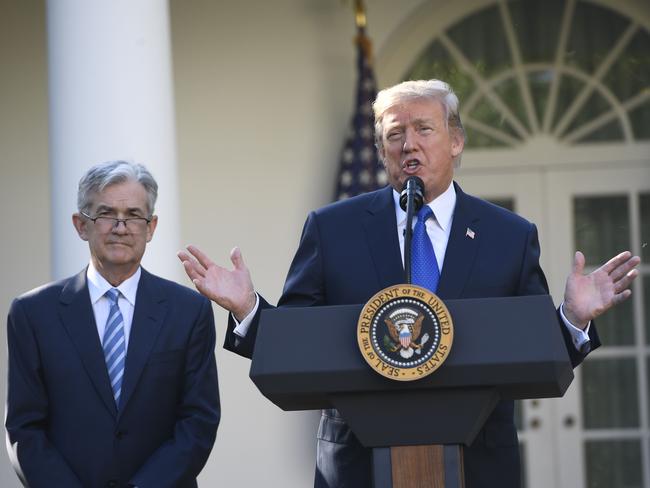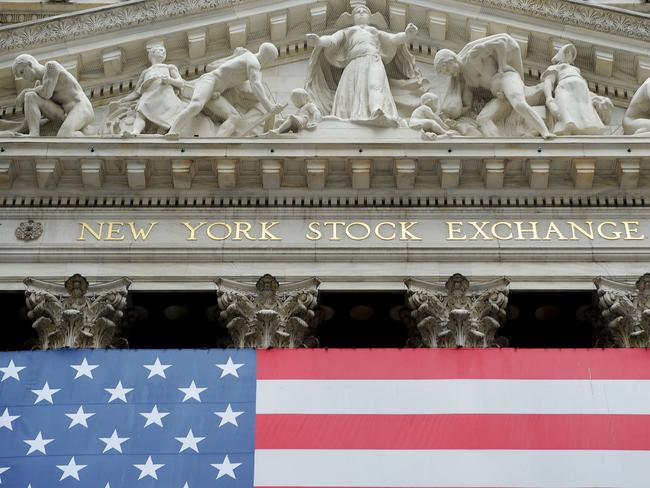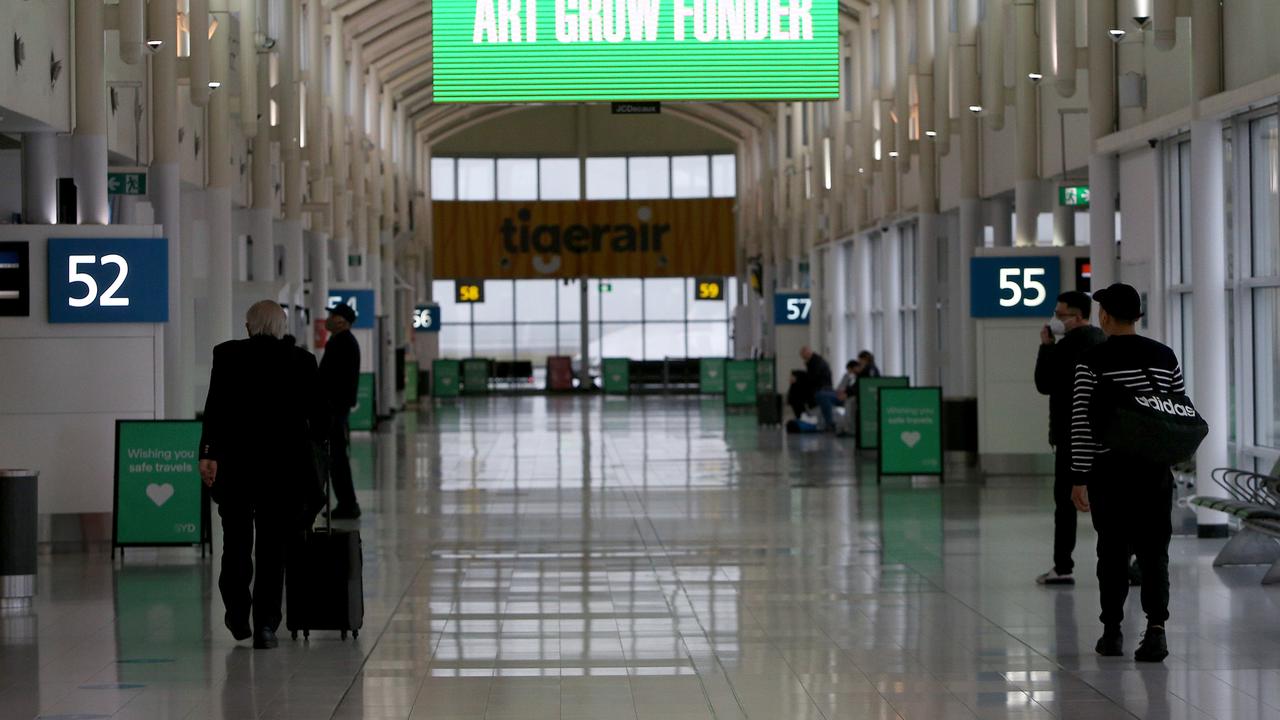Terry McCrann: Fate of property market has a Trump card
IS a surging share market going to save investors from plunging property prices? The bad news is it is completely outside our control and the semi-good news is that any fall will be small, writes Terry McCrann.

Terry McCrann
Don't miss out on the headlines from Terry McCrann. Followed categories will be added to My News.
IS a surging share market going to save investors from plunging property prices?
The bad news is that the first is unlikely to happen any time soon and in any event it is completely outside our control: it is in the gift of Donald Trump and Jerome Powell in Washington and the “smartest guys in the room” (or at least, in their own fantasies and vanities) on Wall St.
The semi-good news is that any fall in property prices will be only a very small percentage of the huge rises that have taken place in recent years — at least, that is in Sydney and Melbourne.
AMP TO LIFT VARIABLE INTEREST RATES
GLOBAL PRICES WILL PULL RUG OUT FROM AUSSIE MARKET
INTEREST RATES VARY BETWEEN STATES
Now true, this will be small comfort if you are a property owner — or investor — somewhere else in Australia and haven’t seen the two-city surge. And small comfort also if you’ve bought one — or worse, multiple — apartments “off-the-plan” in Melbourne and Sydney and are headed for an uncomfortable settlement, or settlements plural.
Then again, property is “complicated”. One man’s pain is another woman’s gain. Everything I’ve just written, in terms of winners, grinners, losers and moaners, is reversed if you are trying to buy property, whether to live in or for investment.
I could add yet further complication: the dynamics of what has already been happening with interest rates and housing loans and what is likely to happen over the next year to two years.
And then throw in moves in the Aussie dollar. Will it go to US70c and indeed even lower? Is that good or bad news?

First, the sharemarket: is it finally on track to get back to and then top its pre-GFC high?
Perhaps the biggest “truth” that is drummed into every investor is that after every bust — the Great Crash of 1929; the (seemingly) bigger crash of 1987 (and now the 2008 GFC?) — is that the market always gets back to its pre-cash boom high and then marches higher.
But it’s been approaching 11 years since the Aussie market hit its pre-GFC high (in November 2017) and while every other major market in the world has long since got there and then gone much higher, we haven’t looked even close to doing so.
The Japanese market is a semi-exception. While it has easily topped its pre-GFC high, that wasn’t actually a record high.
The Japanese record high had come in the mid-1980s, before the 1987 crash; Japan has never got back to those dizzying levels when it looked like the Japanese were going to buy all the property in Manhattan and almost literally own the world.
Thirty years on, now it’s the Chinese “buying Manhattan” — and Melbourne and Sydney and London … Ah, the more things change, the more …
First the sharemarket. In recent weeks it’s looked like it’s finally broken away from the 6000 level.
After Wall St “buckled” at the start of the year, the 200 index went back and forth through 6000 five times in the first five months.
Then, in the first week of June it did it three times. Since then it has moved, seemingly comfortably above 6200.

For it to reach the 2007 high a little above 6800, Wall St would have to keep going up.
And where Wall St goes is in the hands of what President Trump does with the US economy and what Powell, the head of the US Fed, does with US interest rates.
Into 2019 we face an arm wrestle between rising US rates — which is negative for the share market — and strong profits driven by both an overall strong US economy and the globally dominant US tech stocks.
Our problem is that we just don’t have the stocks to ride any upside. The Big Four banks remain the biggest component of our market. They face two huge headwinds — the royal commission and the slowing property market.
Then comes the big two retailers — they are not going to be booming anytime soon, facing stolid retail spending and digital competition.
If Wall St does go higher it will likely drag our market higher, but I can’t see it getting easily to 6800.
As for property, there are just too many different sectors to make a simple generalisation.
New apartments are under the greatest pressure from the tighter lending, likely higher rates and repayments and a slowdown if not withdrawal of Chinese buying.
There’s a similar flow-through into established middle-to-higher end Melbourne-Sydney property.
The fall in clearance rates reflects more, I would argue, expectations from sellers of continued price rises rather than a big fall in what buyers are prepared to pay.
Frenzied headlines of “plunging prices” are absurd. Yes you will likely see falls of 5-10 per cent on early-2018 levels, but that is off prices up to 50 per cent or more in 3-5 years and more than doubling since 2007, the pre-GFC peak.
If the economy stays in reasonable shape, buyers will emerge with more affordable property.



